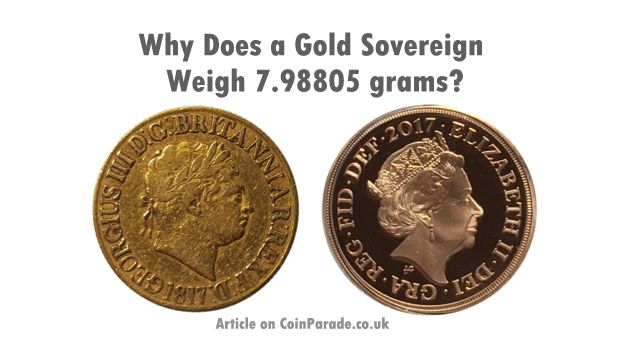
Although the Gold Sovereign is one of the World’s most renowned coins, it has a strange weight: 7.98805g. That’s 0.2354 troy ounce which is just as obscure. So how did we get here?
It all started at the beginning of the 19th Century. Great Britain already had another famous gold coin, the Guinea, but that was only minted once after 1799. The reason for this was that the French Revolutionary Wars (1792-1802) and the Napoleonic Wars (1803-1815) had eaten into the gold reserves to the extent that the government introduced £1 banknotes to make up for the lack of gold coins.
After the conflicts were finally over, Britain decided that it was time to stabilise the currency and a major overhaul of the existing system was proposed; it was known as the Great Recoinage of 1816. The idea was to use silver coins for lower denomination values and replace the Guinea with a new gold coin, the Sovereign.
Why replace the Guinea?
At the time the Guinea was one of the World’s leading coins, but it did have a strange value. At one time the value fluctuated with the gold price but 1717 it had been fixed to one pound and one shilling, or 21 shillings. Considering there was 20 shillings in one pound then a 21 shillings coin was a pain.
So in the Great Recoinage there was the opportunity to have a true one pound gold coin, worth 20 shillings. The coin was named after a previous coin known as the English Sovereign.
What should a Gold Sovereign Weigh?
It was fairly simple mathematics to work out the mass of this coin. The gold to be used in the coin would be 22 carat (11/12ths gold, 1/12th copper) as this 91.67% gold alloy would wear less in circulation than pure gold. The price of 22 carat gold at the time was £46 14s 6d (46 pounds, 14 shillings and 6 pence) per Troy Pound (weight).
So One Pound’s worth of gold would be 123.2744783 grains, although they probably couldn’t measure to that accuracy at the time.
123.2744783 grains is 7.9880518 grams.
And that’s how the Sovereign got it’s weight. It was first minted in 1817 and it is exactly the same weight that is used today. The diameter (22.05mm) and thickness (1.52mm) are also the same. It has a gold content of 7.3224 grams.
The Gold Sovereign is more than 200 Years Old
So the sovereign has been around for over 200 years – but only just survived the first few years. After using £1 banknotes for a few years, the public (a bit like today) thought it more convenient to have a wad of banknotes rather than a heavy bag of coins.
In 1817 mintage was 3,235,239 with another 2,347,230 in 1818, but in 1819 due to unpopularity the demand was only 3,574 and some proposals were being made to introduce a £1 banknote with an exchange-for-gold guarantee. The people liked the idea, but the government didn’t, maybe through fear of counterfeiting notes that were crudely printed compared to today’s standards. In 1826 it became illegal to issue banknotes under the value of £5.
Yet the gold sovereign not only survived but thrived. Today, although not a circulating coin, it is extremely popular with collectors and in recent times it has once again shown it’s value and durability to investors.








